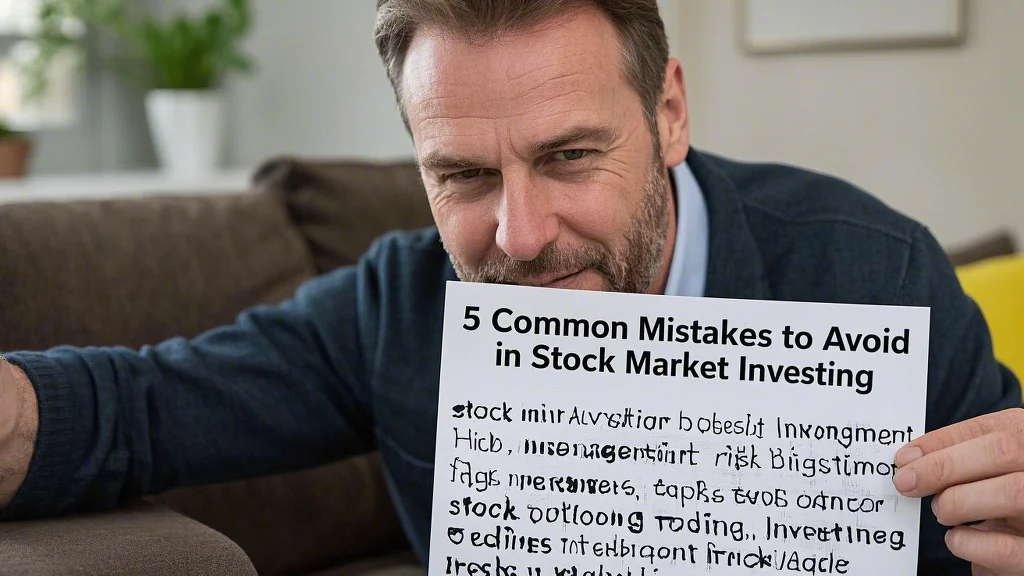Overlooking the Fundamentals of Market Participation
Many newcomers to the stock market for beginners dive in without understanding basic market mechanics or establishing clear investment goals. They confuse investing with gambling, chasing hot tips and making impulsive decisions based on social media chatter rather than fundamental analysis. This approach often leads to buying overvalued stocks at market peaks and panic selling during inevitable corrections. Successful investing requires developing a disciplined strategy before ever placing your first trade – one that aligns with your financial objectives, risk tolerance, and time horizon.
The most common foundational mistake involves failing to distinguish between trading and investing. Traders seek short-term profits from price fluctuations, while investors build wealth gradually through ownership stakes in quality businesses. Each approach requires different skills, time commitments, and psychological temperaments. Beginners often blend these styles haphazardly – holding some positions long-term while speculating with others – creating portfolio confusion and inconsistent results. Establishing clear criteria for what you’ll buy, why you’re buying it, and when you’ll sell creates the framework for rational decision-making when markets become turbulent.
Misjudging Risk and Reward Relationships
Proper investment risk management remains the most overlooked aspect of successful investing, particularly when pursuing high return investments. Many investors focus solely on potential gains while ignoring the very real possibility of permanent capital loss. They overload on speculative stocks or sector bets that promise astronomical returns, only to suffer devastating losses when market sentiment shifts. The key lies in understanding that higher potential returns always come with greater risk – a relationship that can’t be circumvented through wishful thinking or clever stock picking.
Position sizing represents the most effective risk control tool available to individual investors. Limiting any single investment to a small percentage of your total portfolio (typically 1-5%) ensures that no single mistake can derail your long-term plans. Diversification across sectors, market capitalizations, and geographic regions further mitigates risk without necessarily sacrificing returns. Many investors discover too late that they’ve concentrated risk in correlated assets that all decline simultaneously during market stress. Regular portfolio reviews assessing both individual holdings and overall asset allocation help maintain appropriate risk levels as market conditions evolve.
The Perils of Complex Trading Strategies
Stock options trading attracts many beginners with promises of leveraged gains and “can’t lose” strategies, but these complex instruments often backfire for inexperienced investors. Options involve expiration dates, implied volatility, and Greek calculations that create multidimensional risks beyond simple stock ownership. The allure of generating income through options writing can blind investors to the catastrophic losses possible if markets move against their positions. Even seemingly straightforward strategies like covered calls can limit upside potential while providing only modest downside protection.
Advanced strategies like spreads, straddles, and iron condors appear mathematically sound on paper but often crumble in real-world conditions where liquidity dries up or volatility spikes unexpectedly. Many options traders underestimate the psychological toll of watching paper gains evaporate as expiration approaches or assignments occur. The time commitment required to monitor options positions properly often exceeds what casual investors can realistically provide. While options have legitimate uses for hedging and strategic positioning, they’re rarely suitable as primary wealth-building tools for those still mastering basic investing principles.

Neglecting Performance Tracking and Analysis
Failing to utilize proper investment tracking tools represents a subtle but costly mistake that prevents many investors from improving their results. Without accurate performance measurement, there’s no way to distinguish skill from luck or identify recurring behavioral mistakes. Basic brokerage statements often provide misleading return calculations that don’t account for cash flows or properly weight time periods. Sophisticated investors track money-weighted returns that reflect their actual experience, not just abstract time-period returns.
Maintaining detailed trade journals that record not just what was bought and sold, but why those decisions were made and what emotions were involved, provides invaluable learning opportunities. Many investors discover through review that their best-performing holdings resulted from lucky guesses rather than sound analysis, while their worst came from abandoning disciplined strategies during emotional moments. Benchmarking against appropriate indices reveals whether active management efforts are actually adding value after fees and taxes. Without this rigorous self-assessment, investors often repeat the same mistakes while attributing failures to external factors beyond their control.
Emotional Decision-Making in Volatile Markets
The greatest threat to investment success isn’t lack of knowledge about markets – it’s lack of control over one’s own psychological responses. Fear and greed drive investors to make precisely the wrong moves at the worst possible times – selling quality holdings during corrections and piling into overvalued markets during euphoric peaks. The 24/7 financial news cycle amplifies these emotional reactions by framing normal market fluctuations as crisis events requiring immediate action.
Developing emotional discipline begins with creating an investment policy statement that outlines your strategy in writing before emotions come into play. This document should specify your target asset allocation, criteria for buying and selling, and guidelines for rebalancing. Automated investment plans help remove emotion from the equation by consistently investing fixed amounts regardless of market conditions. Many successful investors find value in maintaining “worry lists” of potential risks – when a feared scenario actually occurs, they’ve already considered their response rather than reacting impulsively. The ability to remain calm when others panic provides one of the most reliable edges in investing.
Chasing Performance Instead of Sticking to Strategy
The siren song of recent top performers leads many investors into a destructive cycle of buying high and selling low. They load up on whatever sector or style has done well lately, only to abandon it when inevitable underperformance occurs. This performance-chasing behavior causes investors to miss the best days in the market (which often follow the worst) while piling into assets at peak valuations. The result is substantially lower returns than simply buying and holding a diversified portfolio through full market cycles.
Market history clearly shows that leadership rotates unpredictably between asset classes, sectors, and investment styles. Yesterday’s laggards often become tomorrow’s leaders, and vice versa. Successful investors maintain exposure to all areas of the market rather than trying to predict which will lead next. They understand that being out of favor for periods is the price of admission for long-term outperformance. Maintaining this perspective requires tuning out short-term performance comparisons and focusing instead on whether investments still meet your original criteria for ownership.
Underestimating the Impact of Costs and Taxes
Many investors focus obsessively on gross returns while ignoring how fees, expenses, and taxes erode their actual take-home results. High-turnover strategies generate substantial transaction costs and short-term capital gains taxes that can consume 30% or more of nominal returns. Expense ratios that seem trivial (1% versus 0.1%) compound into massive differences over decades. Even tax-efficient accounts like IRAs and 401(k)s eventually face taxation upon withdrawal, requiring strategic planning.
Smart investors minimize costs through low-expense index funds, tax-aware asset location (placing less tax-efficient holdings in sheltered accounts), and long holding periods that qualify gains for preferential rates. They avoid unnecessary trading that generates commissions and bid-ask spreads while potentially triggering tax liabilities. Understanding the tax consequences before entering a position prevents unpleasant surprises at filing time. The most successful investment strategies combine solid pre-tax returns with intelligent tax management to maximize what actually ends up in your pocket.
